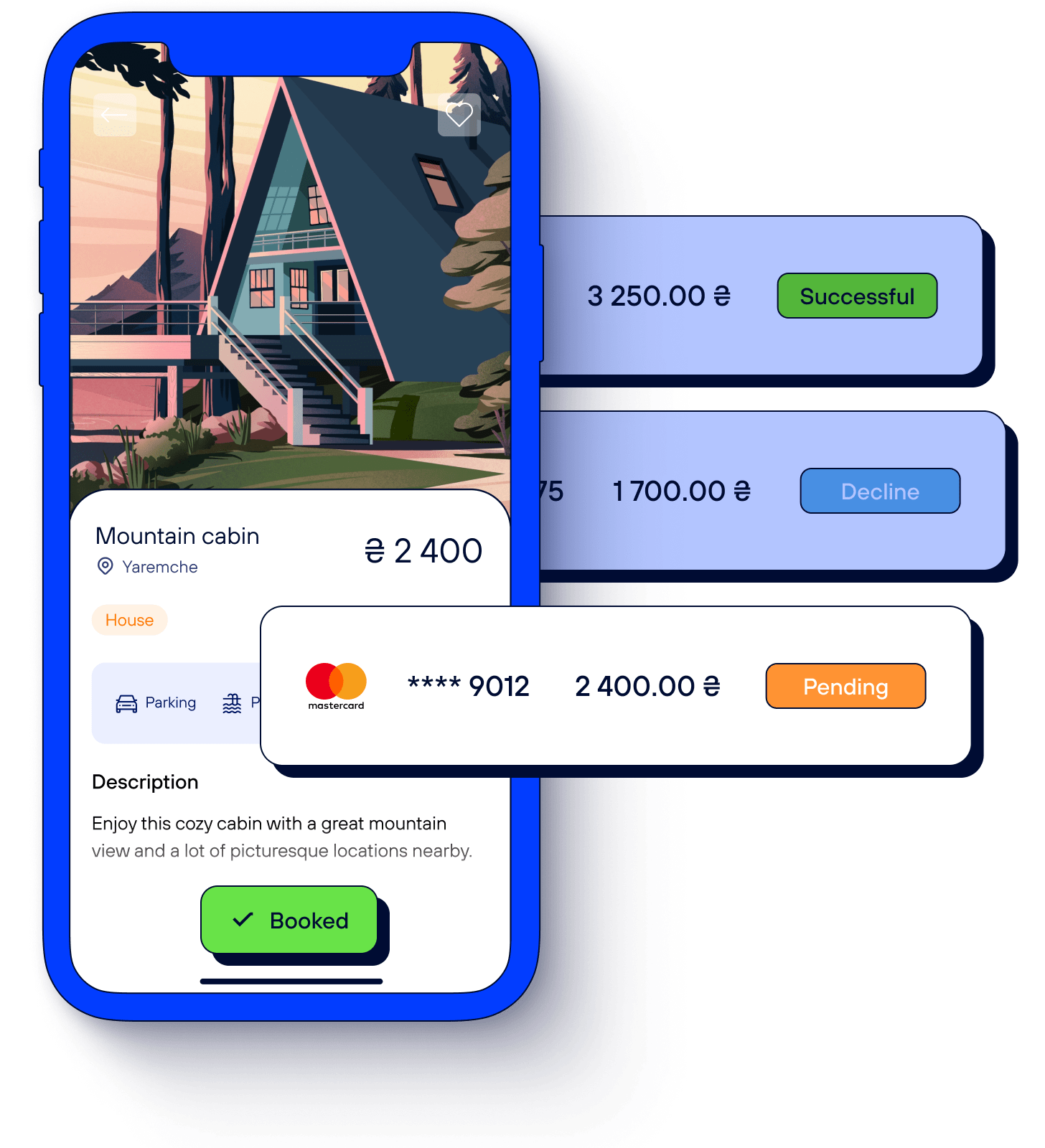
Authorization hold
Deferred charge: reserve money on the customer's card at the time of payment, and write off later

The benefits for your business
Cancel a hold at any time
Partial capture
Less refunds — less spending
Automatic unlocking of funds

How it works
This feature unlocks the opportunity to divide the payment process into two separate stages: authorization and capturing funds

Useful tool to optimize various tasks

Getting a prepayment
For services, goods, accommodation

Issuing insurance payment
If you rent out things, appliances or transport

Reserving the product
If the customer wants to first inspect or try on the purchase
Expand your reach and tap into new opportunities with Tranzzo's cutting-edge payment solutions
Create an account to start integration, or reach out to our manager and clarify the details